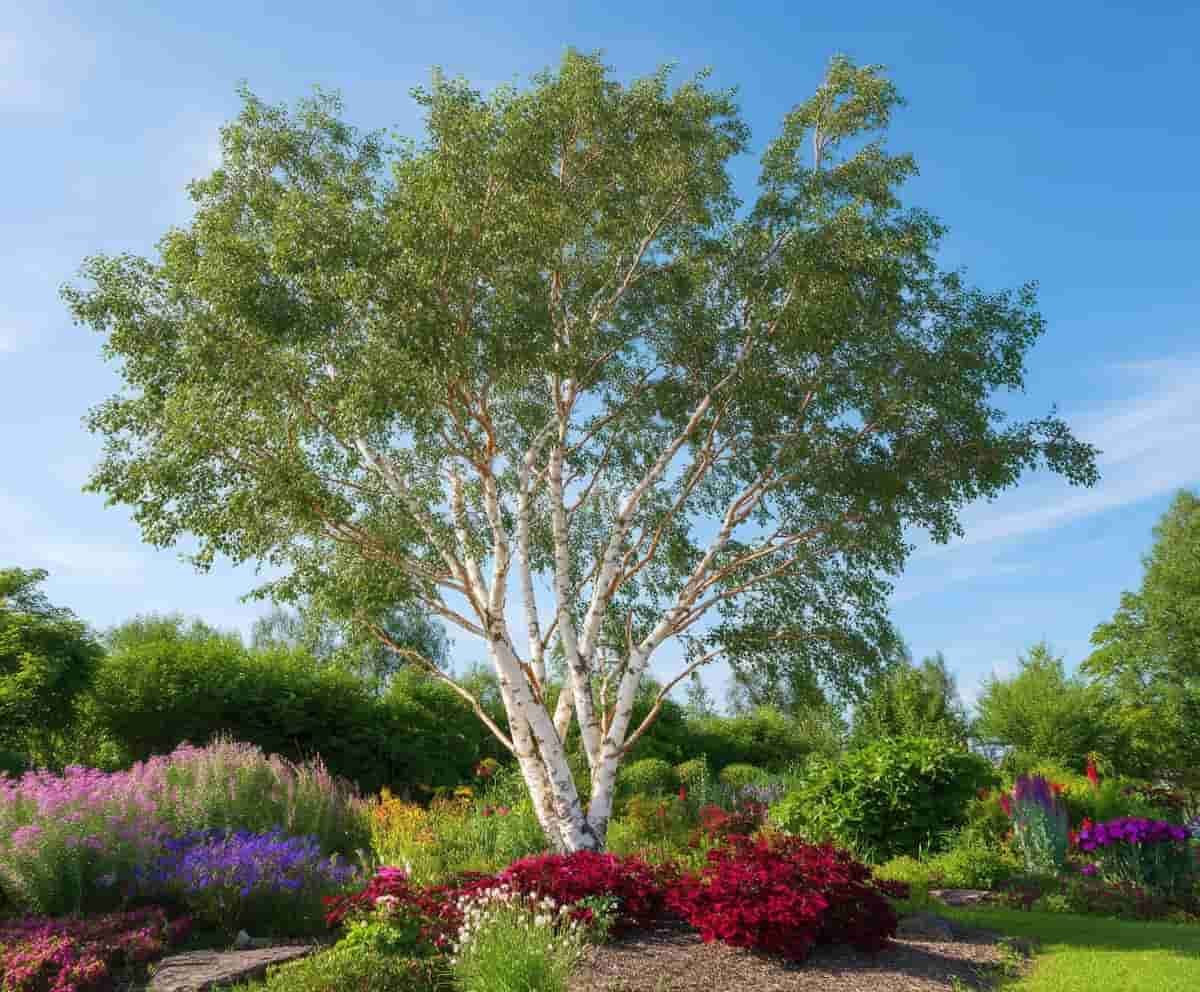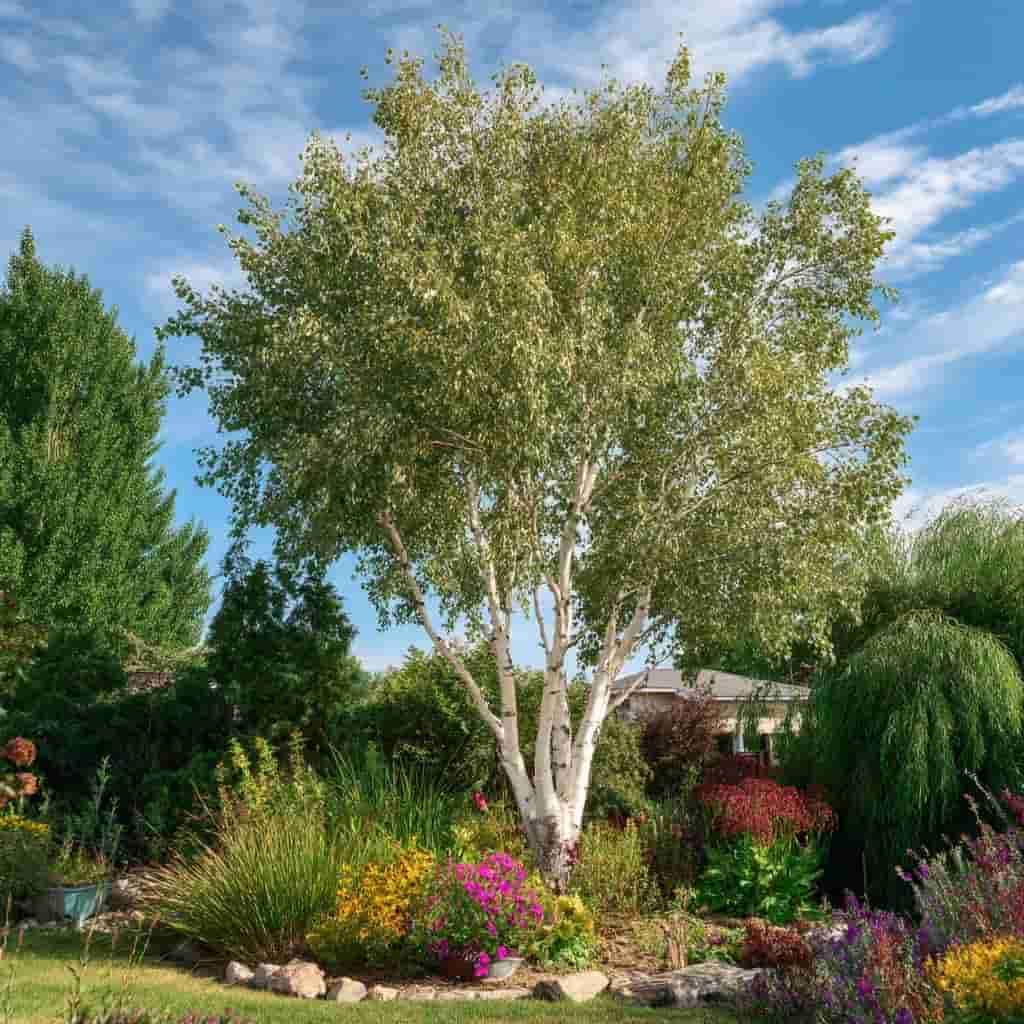The birch tree, especially the river birch variety, is a favorite among landscapers and homeowners for its unique bark, graceful canopy, and fast growth. But while its beauty and adaptability are appealing, not every yard is suited for this tree. Before planting one in your garden or backyard, it’s important to understand both the strengths and limitations of the river birch. In this guide, we’ll break down 10 clear pros and cons of the birch tree, offer landscaping advice, and help you decide whether this striking species is the right fit for your space.
Table of Contents
🌳 Birch Tree Overview
The river birch (Betula nigra) is a deciduous tree native to North America, commonly found near rivers and wetlands. Known for its peeling, cinnamon-colored bark and softly cascading leaves, it’s one of the most visually distinctive trees in residential landscapes. This tree grows quickly and adapts to various soil types, making it an attractive option for both new and experienced gardeners.
River birches typically reach heights of 60–80 feet and can live for 50 to 75 years. Their roots grow wide and strong—perfect for stabilizing soil but potentially problematic near sidewalks, foundations, or underground utilities.
✅ 5 Pros of Planting a Birch Tree
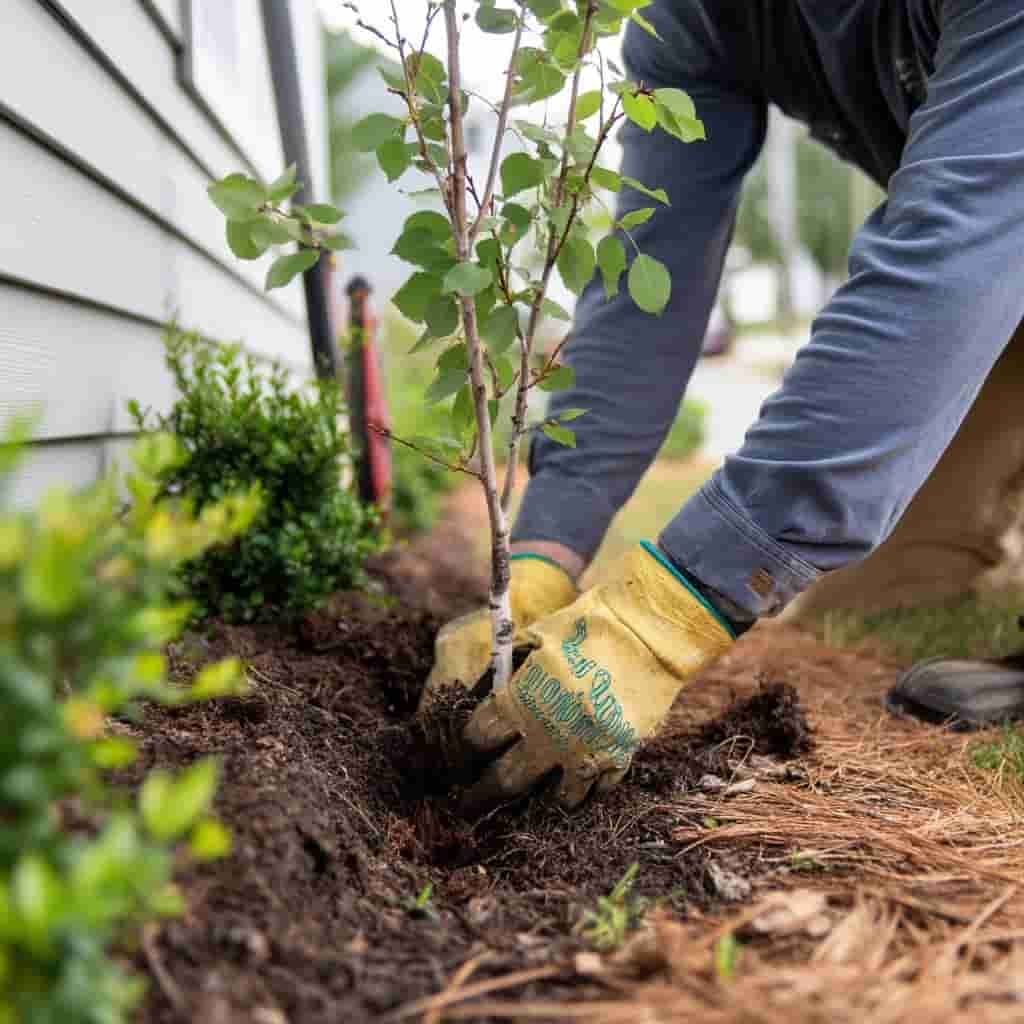
1. Eye-Catching Aesthetic Appeal
Few trees are as visually dynamic as the river birch. Its bark naturally peels in thin, curled layers, exposing a mix of pink, gray, and tan tones underneath. This unique texture adds year-round visual interest to your yard, even after leaves fall in winter.
2. Tolerates a Variety of Soils
Whether your garden has sandy, loamy, or clay-heavy soil, the birch tree is up for the challenge. It’s particularly well-suited for areas with poor drainage or variable water levels—ideal for locations with seasonal flooding or near rain gardens.
3. Fast Growth Rate
Want a tree that grows quickly? The river birch can shoot up by 2 to 3 feet per year in ideal conditions. This makes it perfect for anyone looking to establish shade, privacy, or visual structure in a relatively short time.
4. Wildlife Friendly
The birch tree supports local biodiversity. Birds nest in its branches, and insects like caterpillars feed on its leaves—helping fuel the local food chain. In short, it’s a great choice if you’re building a pollinator-friendly or wildlife-rich landscape.
5. Resistant to Most Pests and Diseases
Unlike many ornamental trees, the river birch is relatively low-maintenance. It’s resistant to bronze birch borer (a common killer of other birch species) and generally tolerates local pests and diseases without the need for chemical treatments.
⚠️ 5 Cons of Planting a Birch Tree
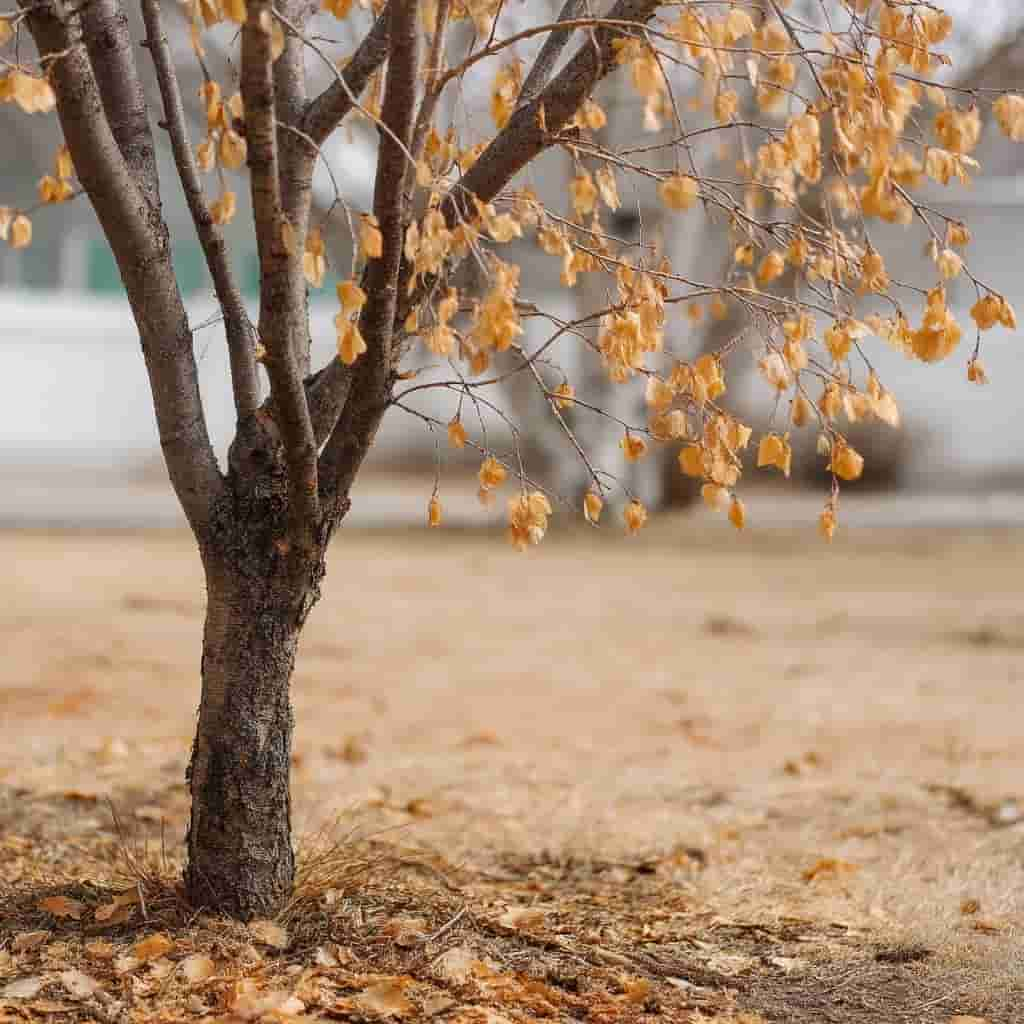
1. Vulnerable to Leaf Spot Diseases
Although it’s more pest-resistant than other birches, the river birch can still fall prey to fungal infections like leaf spot, especially in wet, humid conditions. While not usually fatal, these diseases can make the tree look unhealthy.
2. Messy Catkin and Leaf Drop
Each spring, the birch tree sheds long catkins—cylindrical flower clusters—that can create a mess on patios, walkways, and driveways. Add in the regular leaf drop in fall, and you’ll need to budget time for seasonal cleanup.
3. Aggressive Root System
The birch tree’s roots are shallow but far-reaching. They can crowd out nearby plants, crack pavement, and interfere with plumbing or septic systems. Avoid planting it too close to structures or sidewalks.
4. Sensitive to Drought
While birch trees thrive in moist soil, they don’t handle dry conditions well. Prolonged drought can lead to leaf scorch, pest issues, or even decline. In arid regions or during water restrictions, this tree may struggle.
5. Limited Winter Interest
Since it’s deciduous, the river birch drops its leaves in fall and remains bare all winter. If you’re aiming for a landscape with year-round greenery or color, you may want to pair it with evergreens or winter-blooming shrubs.
🌱 Landscaping Tips for Birch Tree Success
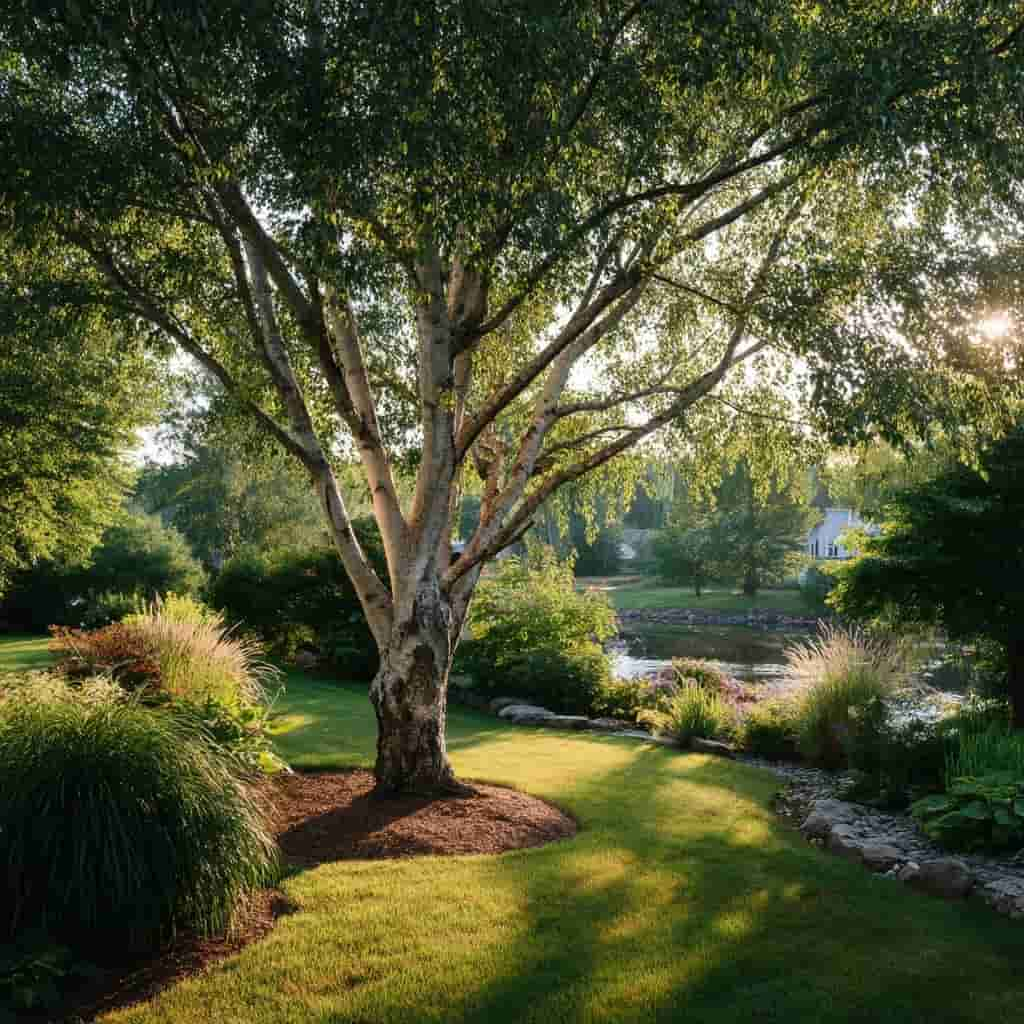
Soil & Sun Requirements
Birch trees prefer:
- Moist, well-drained soil (not waterlogged)
- A slightly acidic to neutral pH (6.0 to 7.5)
- Full sun to partial shade (6+ hours of sunlight daily)
Before planting, amend your soil with compost and ensure there’s enough space for roots to spread.
Proper Spacing
Allow at least 15–20 feet between a river birch and any building, fence, or underground line. For clump varieties (multi-stemmed), space them 8–10 feet apart for proper airflow and form.
Pruning & Fertilizing
- Prune in late fall or winter when sap flow is minimal
- Remove dead or crossing branches to maintain form
- Fertilize once a year in early spring using a balanced, slow-release fertilizer
Companion Planting
Complement your birch tree with:
- Ferns, hostas, or astilbes (for shade under its canopy)
- Hydrangeas and dogwoods (for seasonal color)
- Evergreens (to provide winter balance)
🏡 Real-Life Experiences: Birch Trees in Action
Community Landscaping Projects
In parks and public green spaces, birch trees offer a fast, cost-effective way to add shade and visual beauty. They’re often planted in clusters along walking paths or near water features for a natural woodland effect.
Homeowners’ Lessons Learned
Many homeowners love their birch tree at first but later regret planting it too close to the house. Others praise its beauty and shade but warn about the mess. A bit of planning upfront can prevent big headaches later.
Urban Challenges
In tight urban lots, space is often the limiting factor. Some gardeners opt for dwarf cultivars like Betula nigra ‘Little King’ (also known as Fox Valley® River Birch), which offer the same look with a smaller footprint.
🌍 Environmental Benefits of Birch Trees
Carbon Sequestration
Like all trees, birches absorb CO₂ and release oxygen. A mature birch tree can offset carbon emissions from household energy use over time, especially when planted in groups.
Cooling the Microclimate
By providing shade and releasing moisture through transpiration, birch trees help cool the surrounding air. This is especially valuable in urban environments where heat islands are a concern.
Role in Restoration
River birches are often used in erosion control and wetland restoration. Their roots hold soil in place on stream banks, and their tolerance of poor soil conditions makes them a go-to choice for tough restoration sites.
❓ FAQs About Birch Trees
- How fast do birch trees grow?
Up to 3 feet per year in optimal conditions. - How long do river birch trees live?
Typically 50 to 75 years. - Are birch trees messy?
Moderately—expect dropped catkins, twigs, and leaves seasonally. - Do birch trees need lots of water?
Yes, especially in dry climates. - Can I plant a birch tree near my house?
Only if you allow 15–20 feet of space for roots to spread. - Are river birch trees invasive?
Not aggressively invasive, but their roots can be problematic in small yards. - Are birch trees good for the environment?
Yes—they support wildlife, clean air, and help cool the climate. - Where can I buy river birch trees?
Most nurseries and online plant shops carry them.
🧾 Conclusion
The birch tree is a striking, fast-growing option that offers beauty, shade, and environmental benefits. But it also comes with a few challenges—like root spread, messiness, and sensitivity to drought—that you’ll need to manage wisely. With the right placement and care, this tree can be a standout feature in your landscape for decades. Just be sure to weigh the pros and cons carefully before planting, especially if space or maintenance are concerns.

